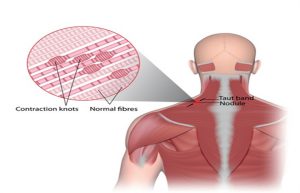A Comprehensive Corrective Exercise Program Based on NASM Protocols for Addressing Biceps Long Head Tendinopathy in athletes and active people
Introduction
The Growing Concern of Shoulder Injuries in Volleyball
Volleyball is a high-impact sport that demands intense shoulder use, especially during actions like spiking, serving, and blocking. As a result, volleyball players are prone to shoulder injuries, one of the most common being biceps long head tendinopathy. This condition involves inflammation and degeneration of the long head of the biceps tendon, leading to pain, reduced range of motion, and impaired performance. Addressing this condition with a structured approach can significantly enhance player longevity and effectiveness on the court.
Importance of a Corrective Exercise Program
A corrective exercise program based on NASM (National Academy of Sports Medicine) protocols is designed to identify muscular imbalances and movement dysfunctions that may contribute to injury. Corrective exercises can help alleviate pain, improve shoulder stability, and prevent further injury, making them essential for volleyball players experiencing biceps tendon issues. This article delves into a detailed corrective exercise program tailored to the needs of athletes suffering from biceps long head tendinopathy, emphasizing shoulder pain relief, tendon rehabilitation, and injury prevention.
Why You Should Read This Guide
Whether you’re an athlete, coach, or physiotherapist, understanding the nuances of exercise therapy, sports physiotherapy, and rehabilitation techniques can help optimize performance and prevent debilitating injuries. We will explore practical strategies, including stretching exercises, strengthening routines, and various therapy options, to restore function and enhance overall athletic performance. So, let’s dive into this comprehensive guide!
Section 1: Expertise in Addressing Biceps Long Head Tendinopathy
Understanding Biceps Long Head Tendinopathy
The long head of the biceps tendon runs through the bicipital groove of the humerus and attaches to the top of the shoulder socket. In volleyball players, repetitive overhead motions can lead to microtrauma and overuse, causing tendinopathy. Symptoms often include pain at the front of the shoulder, especially during overhead activities, tenderness along the biceps groove, and reduced shoulder function.
NASM Corrective Exercise Continuum
The NASM Corrective Exercise Continuum (CEx) is a systematic approach used to improve movement efficiency and correct muscular imbalances. It consists of four phases:
- Inhibition (e.g., foam rolling)
- Lengthening (e.g., static and dynamic stretching)
- Activation (e.g., targeted strengthening exercises)
- Integration (e.g., compound movements for functional improvement)
By following these phases, athletes can address movement dysfunctions related to biceps long head tendinopathy, thereby enhancing shoulder stability and functional movement.
Section 2: Prevention Methods
General Prevention Techniques
Preventing biceps tendon injuries is crucial for volleyball players. Regular assessments of shoulder mechanics, combined with targeted corrective exercises, can help prevent the onset of tendinopathy. Here are some general prevention techniques:
- Posture Correction: Maintaining a neutral spine and avoiding excessive shoulder protraction can reduce stress on the biceps tendon.
- Load Management: Avoiding overtraining and gradually increasing the intensity of training can prevent overload injuries.
- Proper Technique: Emphasizing correct serving and spiking techniques to minimize undue stress on the shoulder.
Techniques Specific to Biceps Tendinopathy
- Scapular Stability Exercises: Strengthening the scapular stabilizers (e.g., serratus anterior, lower trapezius) can offload stress from the biceps tendon.
- Eccentric Loading: Eccentric exercises for the biceps can help in remodeling tendon fibers and reducing pain.
- Progressive Resistance Training: Gradual resistance increases for shoulder and arm muscles to build resilience.
Section 3: Stretching Exercises
General Stretching Guidelines
Stretching improves flexibility, reduces muscle tightness, and enhances blood flow to the tendons. Incorporating both dynamic and static stretching can prepare the muscles for activity and aid in recovery.
Specific Stretching Techniques for Biceps Tendinopathy
- Dynamic Stretching:
- Arm Circles: Enhances shoulder mobility and warms up the shoulder joint.
- Cross-Body Shoulder Stretch: Targets the posterior shoulder capsule.
- Static Stretching:
- Doorway Stretch: Opens up the chest and anterior shoulder muscles.
- Biceps Stretch: Extending the arm against a wall to lengthen the biceps muscle.
- PNF Stretching: Proprioceptive Neuromuscular Facilitation can be effective in increasing the flexibility of the shoulder muscles.
Section 4: Strengthening Routines
Importance of Strengthening Exercises
Strengthening exercises are critical for shoulder stability and pain management. By enhancing the strength of the rotator cuff and surrounding muscles, athletes can protect the biceps tendon from further damage.
Key Strengthening Exercises
- Isometric Biceps Curls: Helps build tendon strength without excessive strain.
- External Rotation with Resistance Bands: Strengthens the rotator cuff, improving shoulder stability.
- Scapular Retraction Exercises: Targets the muscles around the scapula for better support during overhead activities.
When aiming to improve tendon quality and specifically target the biceps long head, it’s essential to focus on exercises that not only build muscle but also enhance tendon resilience. This can be achieved by incorporating techniques that emphasize eccentric loading, tempo control, and active stretching. Here are some effective strategies and tips:
1. Tempo-Controlled Bicep Curls
- Technique: Use a 3-second negative phase (eccentric) and a 1-second positive phase (concentric).
- Execution:
- Start with a regular dumbbell or barbell curl.
- Lift the weight in 1 second (focus on squeezing the biceps).
- Slowly lower it over 3 seconds, focusing on controlled movement.
- Benefits: Eccentric loading improves tendon strength and elasticity, reducing the risk of tendonitis.
2. Eccentric-Only Bicep Curls
- Technique: Focus solely on the lowering phase of the curl.
- Execution:
- Use a heavier weight than usual.
- Curl the weight up with both arms (or use assistance).
- Slowly lower it with one arm over 5-6 seconds.
- Repeat for 3-4 sets of 6-8 reps.
- Benefits: This method increases tendon strength by challenging the muscle-tendon unit, specifically engaging the biceps long head.
3. Isometric Holds
- Technique: Hold the weight in a static position to engage the tendon.
- Execution:
- Perform a curl and stop halfway (elbow at 90 degrees).
- Hold for 20-30 seconds.
- Complete 3 sets.
- Benefits: Isometric exercises can improve tendon stiffness and strength, enhancing the load-bearing capacity of the tendon.
4. Active Stretching for the Biceps Tendon
- Technique: Engage the muscle while stretching to improve tendon flexibility.
- Execution:
- Extend your arm behind you, palm facing upward.
- Gently stretch while contracting the biceps for 5 seconds.
- Relax and repeat for 5-6 reps.
- Benefits: This technique promotes blood flow and helps lengthen the tendon, improving its elasticity.
5. Cable Reverse Curl for Tendon Engagement
- Technique: Using a slower tempo with resistance bands or cables.
- Execution:
- Set up a cable at a low setting with a straight bar.
- Curl with palms facing down (pronated grip).
- Focus on a 2-second concentric and a 4-second eccentric phase.
- Benefits: This engages the biceps long head and brachioradialis, supporting tendon resilience.
6. Preacher Curl with Focus on Negative Reps
- Technique: Emphasize the eccentric phase while using the preacher bench.
- Execution:
- Perform a preacher curl, taking 4 seconds to lower the weight.
- Use a lighter weight to focus on control.
- Benefits: The preacher curl isolates the long head of the biceps, reducing strain on the tendon while promoting strength.
7. Cross-Body Hammer Curl for Long Head Activation
- Technique: This variation targets the long head and the brachialis, promoting shoulder stability.
- Execution:
- Curl the weight across your body towards the opposite shoulder.
- Use a 3-second eccentric phase for each rep.
- Benefits: Enhances shoulder stabilization and tendon quality, reducing strain on the long head tendon.
8. Tendon Gliding Exercises
Tendon gliding exercises are designed to enhance the mobility of tendons, particularly those in the hands, wrists, and forearms. These exercises help tendons move smoothly within their sheaths, which can prevent stiffness, reduce inflammation, and minimize the risk of injuries such as tendonitis.
Technique
- The goal is to glide the tendons through their sheaths, which are protective layers surrounding the tendons. This sliding motion reduces friction and helps maintain tendon flexibility.
- Tendon gliding is particularly useful for people recovering from injuries, surgeries, or conditions like carpal tunnel syndrome, where tendon mobility can be compromised.
Execution
- Forearm Flexion and Extension with Resistance Bands:
- Setup: Secure a resistance band under your foot or to a fixed object.
- Flexion: Hold the band in your hand, with your palm facing upward, and flex your wrist by pulling against the resistance. Hold for a second.
- Extension: Reverse the motion by extending your wrist upward while keeping the band taut.
- Repetitions: Perform 10-15 reps for each hand, focusing on controlled, smooth movements.
- Finger Tendon Gliding:
- Start with your hand open.
- Slowly make a fist, curling your fingers toward the palm in stages (hook fist, full fist, and straight fist).
- Return to the starting position, ensuring each finger moves through its full range of motion.
Benefits
- Improves Tendon Mobility: These exercises help tendons slide smoothly, reducing adhesions or scarring that can occur from overuse or injury.
- Reduces Friction and Inflammation: By ensuring tendons glide properly, the exercises minimize friction within the tendon sheath, which can help reduce pain and swelling.
- Injury Prevention: Regular tendon gliding exercises can maintain flexibility, preventing conditions like carpal tunnel syndrome or tendonitis.
These exercises are simple yet effective and can be integrated into a daily routine to support joint health and tendon resilience.
Additional Tips
- Progressive Overload: Gradually increase the weight to improve tendon resilience over time.
- Avoid Overuse: Ensure rest days to allow tendon recovery, as overloading can lead to inflammation.
- Proper Warm-Up: Use light weights or resistance bands to warm up the shoulder and biceps tendons before intense workouts.
- Hydration & Nutrition: Proper hydration and collagen-rich foods can support tendon health and repair.
By incorporating these targeted exercises and strategies, athletes, particularly volleyball players, can significantly improve the quality and resilience of their biceps tendons, enhancing overall performance and reducing injury risks.
Section 5: Warm-Up Techniques
Benefits of a Proper Warm-Up
A well-structured warm-up prepares the shoulder muscles for intense activity, reducing the risk of injury. It increases blood flow, enhances joint lubrication, and improves muscle elasticity.
Effective Warm-Up Techniques for Volleyball Players
- Dynamic Arm Swings: Loosens up the shoulder and chest muscles.
- Shoulder Taps and Plank Variations: Activates the core and stabilizers.
- Y-T-W-L Shoulder Movements: Engages multiple shoulder muscle groups for comprehensive preparation.
Section 6: Dynamic Stretching
Dynamic stretching is essential for volleyball players, particularly during the warm-up phase. This type of stretching involves active movements that take your muscles and joints through their full range of motion, preparing the body for explosive actions like jumping, diving, and quick lateral movements. Unlike static stretching, dynamic stretches increase blood flow, elevate muscle temperature, and enhance functional flexibility, making them ideal for pre-game preparation.
Benefits of Dynamic Stretching:
- Improves Athletic Performance: Increases muscle temperature and elasticity, which enhances power output and agility.
- Prepares for Explosive Movements: Activates the nervous system, helping players react faster and more efficiently on the court.
- Reduces Injury Risk: Prepares tendons, muscles, and joints for the high-impact actions involved in volleyball.
Specific Dynamic Stretches:
- High Knees and Arm Swings:
- How to Perform: Jog in place while lifting your knees as high as possible, simultaneously swinging your arms in coordination.
- Benefits: Enhances coordination between the upper and lower body, increasing overall mobility.
- Spiderman Walk:
- How to Perform: Step forward into a deep lunge, placing both hands on the ground. Bring the opposite elbow close to the floor while stretching the hip and shoulder.
- Benefits: Improves hip flexibility and shoulder mobility, crucial for spiking and blocking.
Section 7: Static Stretching
Static stretching is best performed after a workout or match to help cool down the muscles, relieve tension, and improve overall flexibility. This type of stretching involves holding a stretch for a prolonged period (usually 15-30 seconds), allowing muscles to lengthen slowly, which can aid in muscle recovery and reduce post-exercise stiffness.
Benefits of Static Stretching:
- Enhances Muscle Recovery: Helps reduce lactic acid buildup and muscle soreness.
- Aids in Tendon Rehabilitation: Gradual muscle lengthening around joints, such as the shoulder, can improve tendon health.
- Increases Flexibility: Regular static stretching contributes to improved range of motion over time.
Key Static Stretches:
- Cross-Body Shoulder Stretch:
- How to Perform: Pull one arm across your chest with the opposite hand until you feel a stretch in the shoulder.
- Benefits: Relieves tension in the shoulder muscles, improving flexibility.
- Overhead Triceps and Shoulder Stretch:
- How to Perform: Reach one arm overhead, bend the elbow, and gently pull the elbow with the opposite hand.
- Benefits: Targets the long head of the triceps and posterior shoulder capsule, which are often tight in volleyball players.
Incorporating Both Stretching Techniques:
By integrating both dynamic and static stretching into your routine, players can enhance performance, reduce the risk of injury, and maintain long-term joint and muscle health.
- Before the Game/Practice: Start with 5-10 minutes of dynamic stretches to activate the muscles and increase heart rate.
- After the Game/Practice: Conclude with 5-10 minutes of static stretching to cool down, improve flexibility, and support muscle recovery.
Section 8: Injury Prevention
Strategies for Injury Prevention
Injury prevention should be a continuous effort in an athlete’s training regimen. Regular monitoring, conditioning, and corrective exercises can minimize the risk of developing tendinopathy.
Specific Techniques
- Prehabilitation Programs: These include preventive exercises to strengthen the rotator cuff and scapular stabilizers.
- Functional Assessments: Regular screenings to detect early signs of muscle imbalances or weaknesses.
Section 9: Recovery Strategies
General Recovery Techniques
Effective recovery strategies ensure the muscles and tendons have adequate time to heal and adapt. Techniques like active recovery, rest, and nutritional support play a crucial role.
Specialized Recovery Methods
- Cryotherapy: Reduces inflammation and alleviates pain.
- Compression Therapy: Enhances blood circulation and reduces swelling.
Section 10: Physical Therapy
Role of Physical Therapy in Tendon Rehabilitation
Physical therapy is a cornerstone of the treatment for biceps tendinopathy. Therapists use various modalities to alleviate pain and restore function.
Key Physical Therapy Techniques
- Manual Therapy: Techniques such as myofascial release to reduce muscle tension.
- Therapeutic Ultrasound: Promotes tissue healing and reduces inflammation.
Section 11: Massage Therapy
Benefits of Massage Therapy
Massage therapy can reduce muscle stiffness, improve circulation, and alleviate pain associated with tendinopathy.
Massage Techniques
- Deep Tissue Massage: Breaks down scar tissue and adhesions.
- Sports Massage: Targets specific muscle groups used in volleyball.
Section 12: Kinesiotaping
Kinesiotaping for Shoulder Support
Kinesiotaping provides additional support to the biceps tendon, reducing pain and improving functional movement.
Application Techniques
- Shoulder Support Tape: Helps in stabilizing the shoulder during overhead activities.
- Scapular Taping: Enhances scapular positioning and function.
Section 13: Manual Therapies
Effectiveness of Manual Therapies
Manual therapies, including chiropractic adjustments and muscle energy techniques, can restore joint mobility and reduce muscle tension.
Techniques for Volleyball Players
- Active Release Therapy (ART): Targets muscle knots and adhesions.
- Joint Mobilization: Improves shoulder range of motion.
Section 14: Dry Needling
How Dry Needling Works
Dry needling involves inserting thin needles into trigger points to release muscle tightness and reduce pain.
Benefits for Biceps Tendinopathy
- Trigger Point Release: Reduces muscle tension and pain in the shoulder.
- Improved Blood Flow: Enhances healing of the inflamed tendon.



